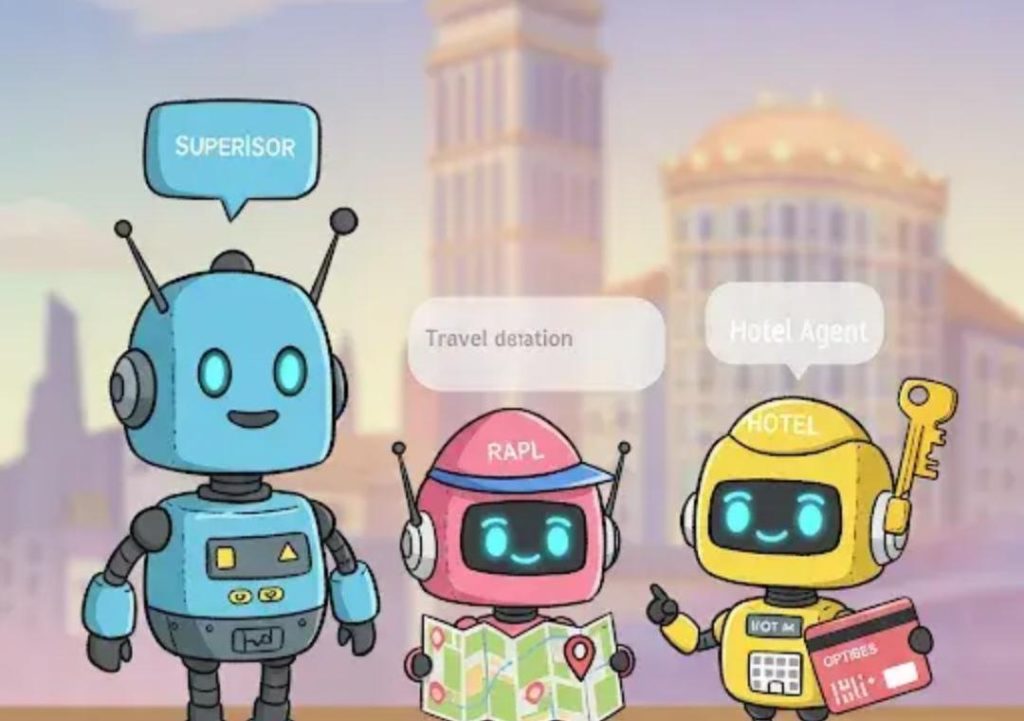
Multi-agent collaboration mimics real team dynamics
In the world of artificial intelligence, a common approach to achieving complex tasks is to rely on a single, highly advanced AI agent. However, this approach has its limitations. What if we told you that a more effective and efficient way to tackle complex tasks is to deploy a team of AI agents, each specializing in a specific task, communicating with each other, and collaborating to achieve a common goal?
Enter multi-agent systems, a revolutionary approach to AI development that mimics the dynamics of human teamwork. In this blog post, we’ll explore the benefits of multi-agent collaboration, how it works, and why it’s becoming increasingly popular in various industries.
The limitations of single-agent AI
While single-agent AI has achieved impressive results in areas such as image recognition and natural language processing, it’s not without its limitations. For instance, a single agent may struggle to handle complex tasks that require multiple skills, such as research, validation, and reporting. Additionally, single-agent AI can be prone to biases and errors, which can be difficult to identify and correct.
The power of multi-agent collaboration
Multi-agent systems, on the other hand, offer a more effective and efficient way to tackle complex tasks. By deploying multiple AI agents, each specializing in a specific task, you can create a modular setup that mirrors human teamwork. Each agent can focus on its strengths, communicate with other agents, and collaborate to achieve a common goal.
In a multi-agent system, agents can work together to:
- Specialize in specific tasks: Each agent can focus on a specific task or sub-task, allowing for greater expertise and efficiency.
- Communicate with each other: Agents can share information, coordinate efforts, and adapt to changing circumstances.
- Collaborate across tasks: Agents can work together to achieve a common goal, leveraging each other’s strengths and compensating for each other’s weaknesses.
Applications of multi-agent collaboration
Multi-agent systems are not limited to any specific industry or domain. They can be applied in various areas, including:
- Research and development: Multi-agent systems can be used to accelerate research and development by automating tasks such as data collection, analysis, and reporting.
- Healthcare: Agents can be trained to specialize in specific medical tasks, such as diagnosis, treatment planning, and patient follow-up.
- Finance: Multi-agent systems can be used to automate financial tasks such as portfolio management, risk analysis, and trading.
- Customer service: Agents can be trained to handle customer inquiries, provide personalized support, and resolve issues efficiently.
Benefits of multi-agent collaboration
The benefits of multi-agent collaboration are numerous, including:
- Improved efficiency: By automating tasks and workflows, multi-agent systems can significantly reduce the time and effort required to complete complex tasks.
- Increased accuracy: By leveraging the strengths of multiple agents, multi-agent systems can improve the accuracy and reliability of results.
- Scalability: Multi-agent systems can be easily scaled up or down to accommodate changing demands and workloads.
- Flexibility: Agents can be trained to adapt to changing circumstances and learn from experience.
Challenges and limitations
While multi-agent collaboration offers many benefits, it’s not without its challenges and limitations. Some of the challenges include:
- Agent coordination: Ensuring that agents work together effectively and efficiently requires careful coordination and planning.
- Task decomposition: Breaking down complex tasks into smaller, manageable sub-tasks can be a significant challenge.
- Communication: Ensuring that agents can communicate effectively with each other requires careful consideration of communication protocols and languages.
- Agent development: Developing and training individual agents requires significant resources and expertise.
Conclusion
In conclusion, multi-agent collaboration offers a powerful and efficient way to tackle complex tasks by mimicking the dynamics of human teamwork. By deploying multiple AI agents, each specializing in a specific task, communicating with each other, and collaborating to achieve a common goal, you can create a modular setup that accelerates research, validation, and reporting. While there are challenges and limitations to consider, the benefits of multi-agent collaboration make it an exciting and promising area of research and development.
Source:






